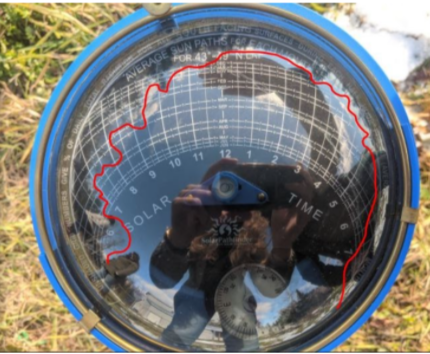
The Baraga Solar team is working directly with the KBIC, or Keweenaw Bay Indian Community, to increase their energy sovereignty and reduce utility costs. The four main projects the team are working on are the Pequaming Fish Hatchery, the L’Anse Community Gardens, the Zeba Trailer Park C Tiny Homes, and the Baraga Casino. The team is completing an engineering design and analysis of each site, including a site evaluation, module and inverter selection, racking system considerations, production modeling, and financial assessments. Additionally, the team is also working heavily with the Michigan Community & Anishinaabe Renewable Energy Sovereignty (MICARES) and the KBIC Committee on Alternative and Renewable Energy (CARE).
For the Pequaming Fish Hatchery, the team is working with two potential areas for a solar system, both of which are limited in size with high shading. The team visited the location to analyze feasibility of the implementing solar and a shading assessment was completed to determine the production losses throughout the year. The Fish Hatchery is the 2nd highest power use in the KBIC, so implementing solar is of great interest.
For the L’Anse Community Gardens and the Zeba Trailer Park C Tiny Homes preliminary site visits have been completed. The team was able to gather shading information for both sites using the Solar Pathfinder. The Community Gardens are largely unshaded and have 3 potential sites for solar arrays. However, based on power usage information provided by the KBIC, this site does not use much power throughout the year, making a large solar array not feasible. The tiny homes are still in the preliminary design stages, so the team is waiting on more information before continuing with production modeling. The solar array for the tiny homes will be roof mounted.
For the Baraga Casino, the team is working with a large open field as a potential solar site to power the Casino. The team has already completed a shading assessment of the site using the solar pathfinder, and concluded that shading is minimal at the site. After analyzing the energy usage information, the team is looking at a system around 500 kW.
In addition to completing the preliminary engineering work on the solar arrays, the team has also compiled information on grant assistance for the projects. The team has researched possible grants that the KBIC could use to help fund implementation of solar arrays as well as energy efficiency improvements.